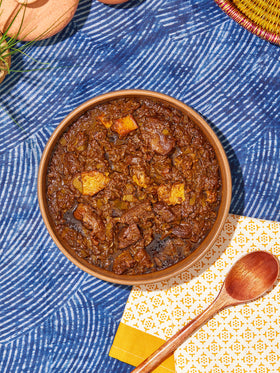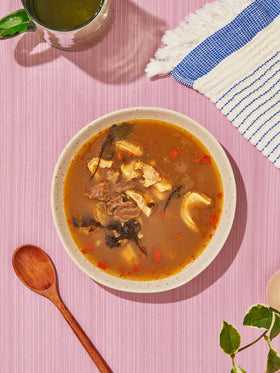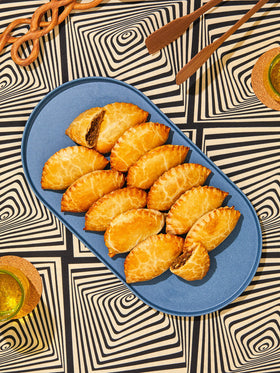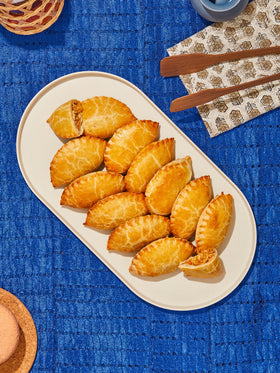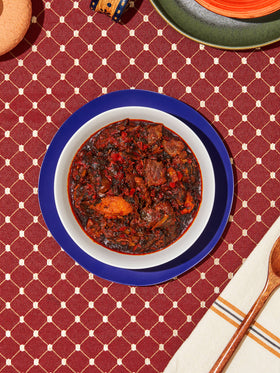Let's Talk Ghanaian Cuisine and Flavors with 'Jay'!
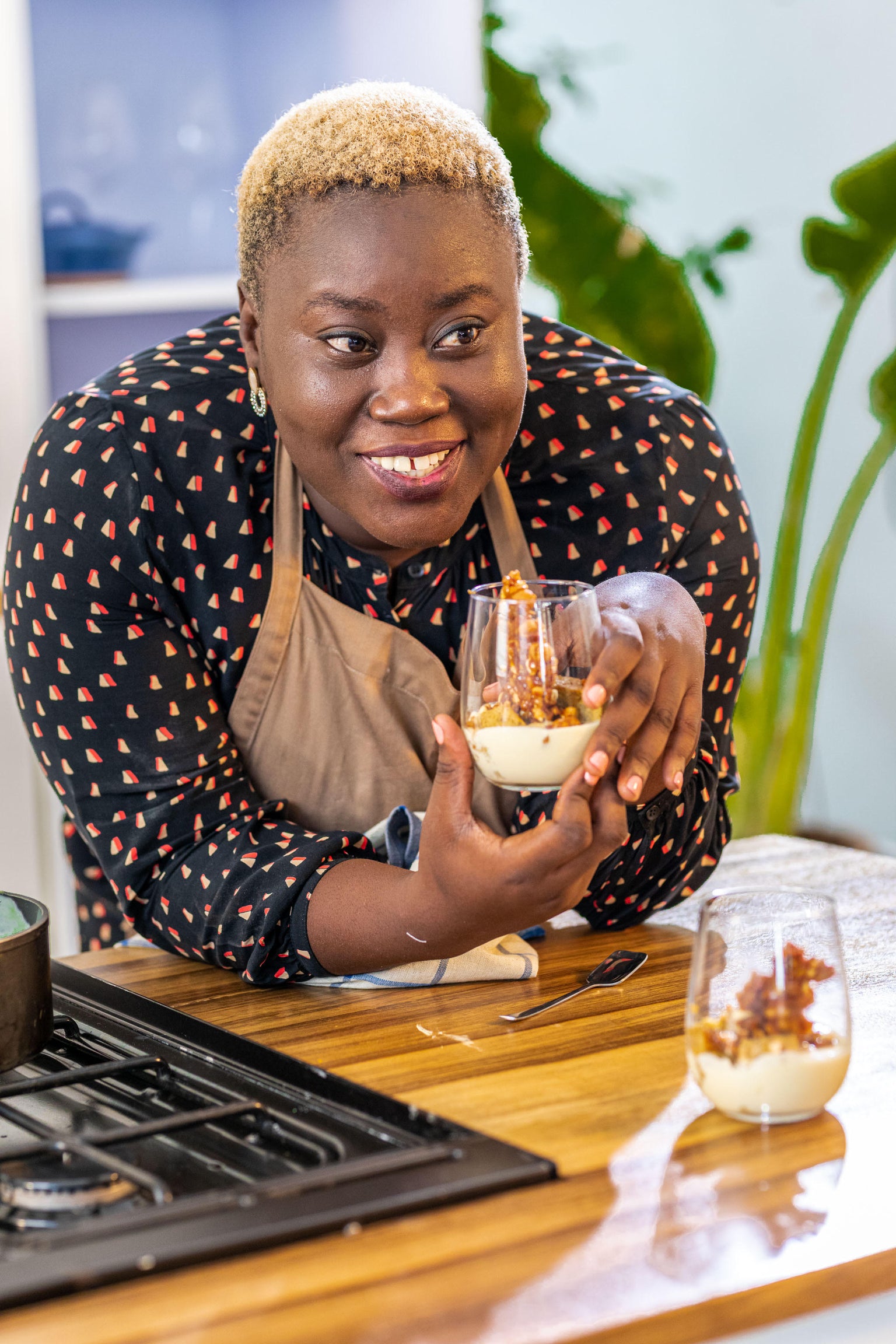
Written by: Bethany
I sat down with Jay to talk about some dishes in Ghanaian cuisine. As a chef and food enthusiast, I tend to want to explore food beyond what I’ve already had and this was the perfect opportunity to have a conversation about some of my favorite categories - Soups and Stews.
Joyce Gyebi is a Ghanaian culinary entrepreneur and owner of the food stall Mukase Chic where she specializes in Anadwo Waakye - late night waakye. She dabbles in recipe development, food styling and has a passion for food history & documentation. She is currently working on an NGO called Culinary For Social Skills where unskilled women are trained in the culinary space to be able to become entrepreneurs and also have access to training in restaurants and hotels.
Bethany Oyefeso: Now that we’ve gotten to know a little bit about you, I want to transition to West African food and how there’s so much more to our cuisine beyond the jollof rice battles. I've been following your journey for a bit now and I know you do a lot of going out into the streets in Ghana to show us the traditional foods that people enjoy everyday. You explore flavors and the different offerings that are available in Ghanaian cuisine. Can you start by telling us about the different regions?
Mukase chic: It's very important that we talk about our food - West African food and move away from the jollof narrative. When it comes to food, I always say this, the reason why people eat what they eat is because of the economic situation. People eat what they eat based on what they find around them. So, if you look at every country, obviously divided into different regions you see that difference in what they eat.
In the northern regions, they tend to eat a lot of greens and because of the weather, drying and salting is the easiest form of preservation for them. Due to the influx of Fulanis in that area, they also eat a lot of fonio, millet and dry grains that can withstand the harmattan. Further down in the region, Kumasi has more forested areas and cassava is grown there so fufu is very popular. They also have a lot of cocoyam that we get Kontomire from which we use for Palava sauce, or Kontomire stew. They have all the soups. All the tomato base soups, the pepper base soups, you find them in Kumasi.
And then we go to the Cape coast and Takoradi. That side of town is where the water is so their food is really fresh. You know, you get a lot of fresh fish stews and fresh fish soups. They have all the fresh things going on in the country.
Then you come to Accra, which is the capital .It’s the town where everybody comes to seek greener pastures. So, basically there's an influx of different meals, it's like Lagos or New York. Everybody comes from their small town or small village and then they miss their food then they try to either use substitutes or try to make it as they remember. Accra is a mix of everything. The Ga’s are the original settlers in Accra. They’re also very close to the water and they say that Ga’s originated from Nigeria so a few of the meals are quite similar to Nigerian meals.
But also you’ll see the influence of the water, which is the fresh shrimp, octopus, what have you. We eat things like kenkey, banku. Then the Volta region where the Ewe’s are from. They are more known for okro. They have varieties of okro soups and different ways of cooking them. They are also a little influenced by Togo and its regions because they share the border so you’ll see a little similarities between the meals from Togo. You’ll realize the history of some snacks and all those things are said to have been from Togo because maybe somebody from Accra crossed the border, went to work and came back with some recipes. So that's how the country is divided and those are the similarities between each of them. We are so similar yet so different. And it's always like where you find yourself and the things that you have available to you that you use for your food.
Interestingly, Jay comes from the Eastern region of Ghana and agrees with me that pounded starches are superior. Anyday, anytime - I am 100% a swallow girl. I especially do not play with my eba and okro soup and actually, that entire region shares the same sentiment with us as some of their most common dishes are Fufu and palm nut soup or tuwo and groundnut soup. Because she’s a big fan of the fermentation process, her personal favorites would be Banku and Okro. “Very soft banku” to be precise and she enjoys her kenkey with red grinded pepper and shito.
Bethany Oyefeso: Tell us a little bit about shito. is it a condiment? Is it a stew? Is it a cross between a condiment and a stew? Is it just a “sauce”? I have always just seen Shito as a condiment that you can add with your stew. My first experience with shito, I ate it with waakye and I was served with rice, beans and spaghetti with stew and I was given the option to add shito.
Mukase chic: Well, I personally think that shito is the greatest Ghanaian invention of all time. That's how I see shito and I think shito is so versatile and it cuts across stews, sauces, condiments. And you know it's a shame because even as Ghanaians we don't know how to use it so much and we just use it for the same thing, just as a condiment for rice, for garri or eba or for waakye but shito on it's on its own is such a beautiful combination of flavors and textures and should be used for so many things. You know, there are times where I tell people this all the time, you can use shito for stews, soups, just as a base because when you break it down, it has everything else that you need. If you look at the flavors there, it has the dry shrimp, the pepper, the ginger, garlic, onion, and then it has the oil and it's been evaporated.. I mean it works. it has all that umami. Some even use tomato puree so it's even perfect. You can use it for breakfast and on snacks. You can use it as a marinade on protein, but usually, we just limit it to using it for waakye and a few other things but like I said before, I'll say it again - Shito is Ghana's greatest invention.
Bethany Oyefeso: Wow. I know this might sound weird but I randomly crave foods that I've never eaten before and one thing that I've always craved so much is light soup and I've never had it. Can I use shito to start light soup?
Mukase chic: Exactly. You can use shito to start light soup. I think light soup is one of the dishes that forms our backbone and it lives to its name, it’s light. I know people are not used to it so they’ll say “Ayyy” but you can. I use shito to grill my chicken. I use it to start light soup. If I want an extra kick in my jollof I just put some in there, you can use it for every single thing. Fish, whatever you want to use it for. it really, really works.
Bethany Oyefeso: I feel like I want to explore that. I always hear that it’s not a hard soup to make at all. I might try it. What are some of the ingredients generally used across the board in all the different regions?
Mukase chic: Ingredients that Ghanaian dishes are likely to have - I think I'll start from tomatoes. Most of our soups and stews have a tomato base then it moves on to pepper, ginger garlic. That's like a trio that we use.
Bethany Oyefeso: the holy trinity.
Mukase chic: Yes, so I think those four things are everywhere and it depends on the way you use it. And you know, there are times that it's stewed, there are times that it's just grinded in the earthenware, the Asanka and it's just eaten like that, there are times that you can even use it as a snack with boiled eggs. So it's almost the same thing, but different applications.
Bethany Oyefeso: What would be a recipe or dish that you would like to share with someone being introduced to Ghanaian food for the first time?
Mukase chic: I mean, if the person won’t hound me over and over for Jollof, I will suggest learning a tomato based stew because like I said, these few ingredients, tomatoes, ginger, onion garlic are the bases of our meals. So if I taught you how to make chicken stews most of the time, the difference is just in the change of protein. You could use the same base for goat, for fish, for pork, and then you could even use that stew for Jollof anyway. So yeah, that'll be my first place to start and then if you're interested in knowing more, we can also move on to soup as well.
Bethany Oyefeso: What soup, other than light soup would it be?
Mukase chic: Other than light soup? Whoa okay. I was going to say light soup but I love groundnut soup and palm nut soup. Those are some of my favorite ones. Palm nut soup used to be a real hassle to make growing up because you pound it for hours but now they have already made palm that you can just buy and add it to your soup so it makes it easier. Peanuts. Same thing, we have a way of making peanut soup. The reason why we make it that way is also to get the oils out of the peanut. So you'd see someone mix tomato paste or fresh tomatoes in the peanuts and then add a little water, salt and cook it on the fire for a longer time to get the oils before they use it for the soup. So yeah, those two soups will be next.
I asked Jay about the difference between the soups and stews and she went on to share with me that the texture and cooking time are the biggest differentiators.
Mukase chic: “Soups in Ghana are lighter and stews are thicker. Stews in Ghana use a lot more tomato base so you need to fry out the tomato to get the oil on top to know that it's done. Soups in Ghana are likely to use less tomatoes, less onions, less ginger and less garlic. And also, what you eat it with. I know there are some people who eat weird combinations, but generally, it's also what you eat it with. stews go with the rice, yam, cocoyam - the starch in its original form. Soups go with starches processed.”.
Towards the end of our conversation, I asked Jay if she could share her personal favorite Ghanaian comfort food. She told me about times spent at her grandmother's home and running across the street to buy beans and plantain.
Mukase chic: “The reason why I was going early was because I love the smell of palm oil. I really love the smell of palm oil and I love to see her set up. And number two, I have a weird thing, where, when I want fried plantain, I don't want the end bits. I want the middle parts, and it has to be a certain texture. So I have to go first so she can have time for me. And I can say, I want this one, and this one and this one. So I think it became annoying for them, if I went and she wasn't there, her kids would just give me anything but till date that's one of the dishes that I travel anywhere for. I do the same thing. It's become behavioral and I love the comfort of boiled beans, with palm oil and crispy onions and plantain and maybe like a little spoon of pepper, it just brings my grandmother's memory and everything back to me every single time.”
FOLLOW JAY’S WORK
You can follow and check out Jay’s work on Youtube and Instagram.
